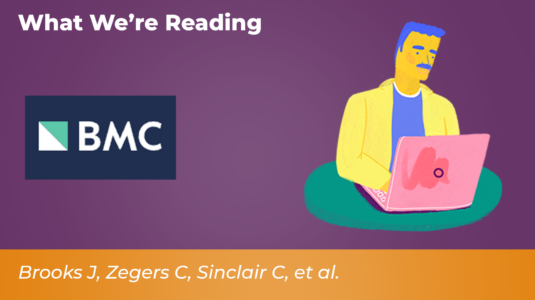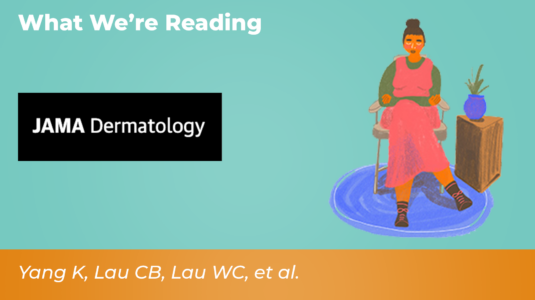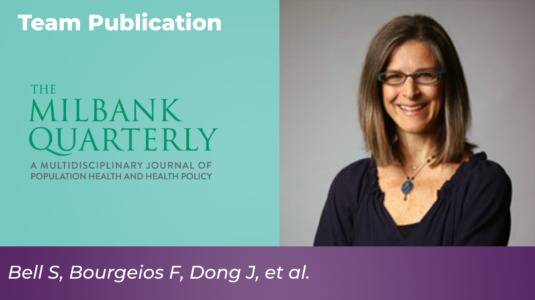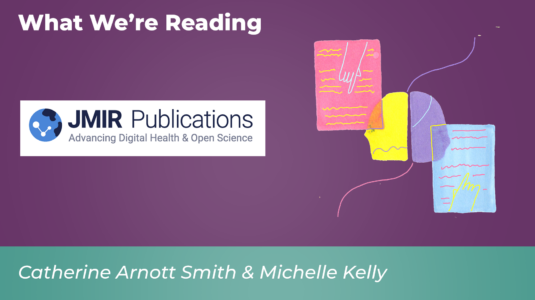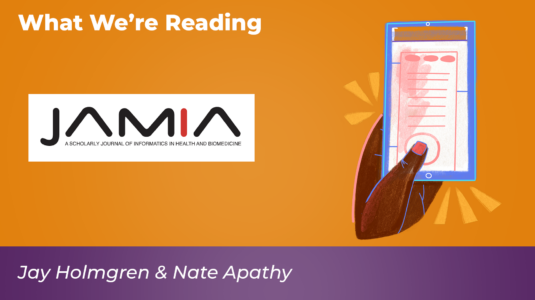This study provides timely information on the views of GPs in England regarding patient access to their web-based health records. Overwhelmingly, GPs were skeptical about the benefits of access both for patients and to their practices.
Peer Reviewed
Understanding the Cures Act Information Blocking Rule in cancer care: A mixed methods exploration of patient and clinician perspectives and recommendations for policy makers
Patients with cancer and their cancer care teams want the ability to tailor information release based on individual preferences and goals. Understanding how to tailor implementation of the Information Blocking Rule is essential for retaining its benefits and minimizing unintended harm for patients with cancer.
Patient perspectives on clinic note transparency within dermatology
Research evaluating patient experiences with accessing their dermatology clinic notes is currently limited. In this survey study, we aimed to assess dermatology patient experiences with viewing online medical records and sought to identify areas for improvement.
Patient identification of diagnostic safety blindspots and participation in “good catches” through shared visit notes
A new study from OpenNotes shows patients and families who read open notes hold unique insights and can catch potential safety hazards that are difficult for clinicians or organizations to see.
In anticipation of sharing pediatric inpatient notes: Focus group study with stakeholders
Distinct themes identified as benefits of pediatric inpatient Open Notes for parents emerged from all the 5 focus groups. These themes were communication, recapitulation and reinforcement, education, stress reduction, quality control, and improving family-provider relationships. Challenges identified included burden on provider, medical jargon, communication, sensitive content, and decreasing trust.
Assessing the impact of patient access to clinical notes on clinician EHR documentation
Using a national, longitudinal data set consisting of all ambulatory care physicians and advance practice providers using an Epic Systems EHR, we used an interrupted time-series analysis to evaluate the immediate impact of the policy change on clinician note length and time spent documenting in the EHR. We found no evidence of a change in note length or time spent writing notes following the implementation of the policy, suggesting patient access to clinical notes did not increase documentation workload for clinicians.
Open notes in patient care: confining deceptive placebos to the past?
In some countries, the practice of “open notes” is advanced with patients using online portals to access their clinical records. In this report, the authors reflect on the consequences of access for placebo prescribing, particularly for the common practice of deceptive placebo use, in which patients are not aware they are being offered a placebo.
Shared access to patient portals for older adults: Implications for privacy and digital health equity
This viewpoint article discusses challenges and opportunities of systematic engagement of care partners through shared access to the patient portal that have been amplified in the context of the COVID-19 outbreak and recent implementation of federal information blocking rules to promote information transparency alongside broader shifts toward care delivery innovation and population aging. We describe implementation considerations and the promise of granular, role-based privacy controls in addressing the nuanced and dynamic nature of individual information sharing preferences and fostering person- and family-centered care delivery.
Patient characteristics and utilization of an online patient portal in a rural academic general internal medicine practice
In a rural academic internal medicine clinic, female patients, aged 41–65, non-smokers, and those without certain chronic conditions were more likely to use an online patient portal. Recognizing and addressing barriers to patient portal use is essential for robust and sustained patient portal uptake and ensuring that the benefits of portal use are equally distributed among all patients.
Lessons Learned from OpenNotes Learning Mode and Subsequent Implementation across a Pediatric Health System
The 21st Century Cures Act has accelerated adoption of OpenNotes, providing new opportunities for patient and family engagement in their care. However, these regulations present new challenges, particularly for pediatric health systems aiming to improve information sharing while minimizing risks associated with adolescent confidentiality and safety.

